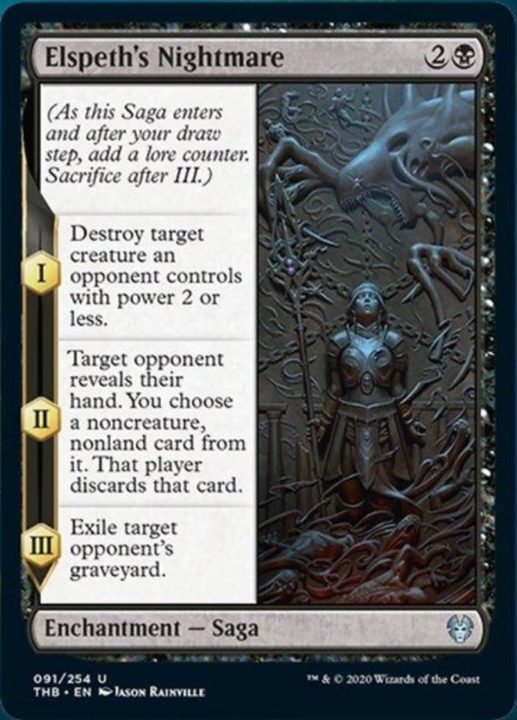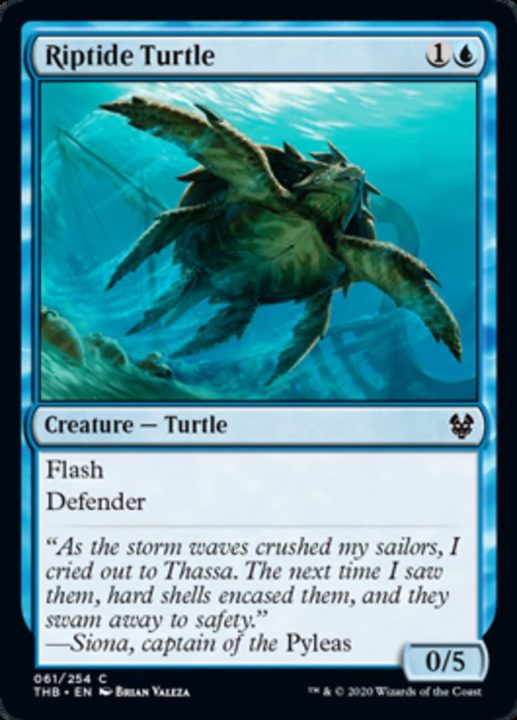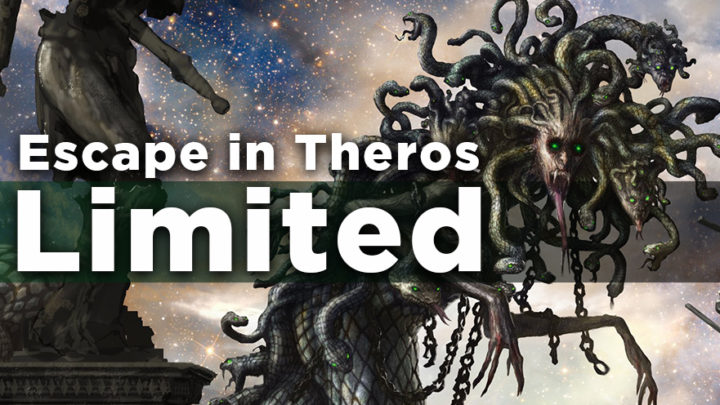Hello, Magic players! We find ourselves a few weeks deep into Theros Beyond Death, and players have a lot of positive things to say about the set’s Limited environment. I’m one of those upbeat voices — Draft in particular has been great fun for me, both on MTGA and in paper. I also think that a HUGE part of that fun comes from the escape mechanic, which is definitive of every deck and every match in this format.
Sure, Theros Beyond Death has other mechanical themes like constellation and devotion, but escape is vastly more impactful, to a level we probably haven’t seen since energy in Kaladesh. In my opinion, it’s a good thing: escape gives decks consistency and flexibility and adds value to effects which would otherwise be dismissed as sideboard cards. The increased weight on these cards then sets up more interesting, layered considerations in drafting and deck-building.
PILLARS OF THE UNDERWORLD
Theros Beyond Death features 22 spells with escape, 23 if you count Underworld Breach. Of these, eight are rares or mythic rares, all of which are slam dunk bombs (the exception being Breach itself, which only shines in a long game where it can recur a couple spells at once). These cards are gifts, but rare ones, so it’s actually the commons and uncommons that are key to your Limited strategy.
There are six common or uncommon escape creatures across Jund colors, and they are the most important creatures in the format. Every decent deck in those colors must play them.
Why are these unassuming cards so fantastic? Simply put, escape guarantees you will always have plays, even when you’re stuck top-decking or flooding out hard. It also generates card advantage, turning every three-ish cards in your graveyard into +1 “extra” spell. Except that extra card is guaranteed to be a useful spell or creature, so it’s actually better than a draw would be! There aren’t many better things to draw in Limited than a relevant-sized creature.
While a 5/5 for five isn’t incredible, it’s worth noting that this set has a lot less good removal than others. To enable the creature-buffing themes of Theros, Wizards went light on the hard removal spells, particularly outside of black. So any serious mana investment in a single large creature is more justifiable here. For related reasons, having the largest creature (or the most large creatures) is a huge deal in this set. You can be the one to apply pressure and force favorable trades, and all of these creatures come back large enough to tick that box. This is also what makes Sentinel’s Eyes one of the most important white commons, despite not being a creature.
Sentinel’s Eyes on your largest creature shuts down the potential for an opponent to race it. This forces the trade, and if you don’t blow them out with white’s combat tricks, you can just recast Sentinel’s Eyes targeting your next-biggest creature! This is basically a hyper-efficient equipment which triggers constellation, “heroic”, and aura enablers like Dawn Evangel and Hateful Eidolon.
Looking at the remaining noncreature escape spells, Mogis’s Favor can definitely over-perform as removal in a set with sixteen X/1s at common or uncommon. It’s often worth playing for the first cast alone. But the escape ability is more fringe here, simply because you would rather exile those graveyard cards to escape a creature if you have those options in deck.
Meanwhile, Escape Velocity, Satyr’s Cunning and Fruit of Tizerus are effects which aren’t really worth a card the first time you cast them, so adding the chance to cast them again doesn’t really make them playable. The blue escape spells (and Cling to Dust) fall somewhere in the middle. If you don’t have access to escape creatures through your second color, these can be good to include just so you’re not giving up the free card advantage escape offers. You can also play them just to increase your density of escape effects, understanding that in most games, you’ll be happy just casting them once.
PLANNING YOUR ESCAPE
So, on to the tough question: How do you actually draft and build decks around escape? First, almost all decks should include either green or black to access multiple escape creatures. Those that don’t tend to be highly aggressive archetypes — UW and UR tempo and RW go-wide aggro — which aim to end games quickly before the value from opposing escape creatures can overwhelm them. These decks will also play the good escape spells available to them, such as Sentinel’s Eyes and Underworld Rage-Hound.
How many escape cards is too many? I’m honestly not sure there is such a thing! The fact is that the escape creatures are already fine playables on their first cast. You want access to escape as early and often as possible, so raising your density of it usually outweighs any diminishing returns. The only creatures you need to be reliably escaping to justify in most decks are Chainweb Aracnir and possibly Rage-Hound and Loathsome Chimera.
The scariest situation to stack escape creatures is in RB, since Charger and Rage-Hound are both next-to-useless if you’re on the defensive. I see this as more of a deck-building instruction than a real disadvantage, though — since they’re among the best offensive common creatures in Theros Beyond Death, you should just always be attacking!
Ideally, I think almost every Theros Beyond Death Limited deck should aim to play 3+ escape spells. The biggest factor is working out how many you need to maintain a solid curve and fit in other types of effects.
THEROS BEYOND DECK SIZE
I am far from the first person to identify how central the escape creatures are to this format. What most players follow up with is asking whether decks with escape creatures should play more than 40 cards. This is a format which regularly comes down to decking thanks to self-mill and the staying power most decks get from escape, so I can see where the logic to play 43 or 46 cards comes in. But if you think more about how escape influences gameplay, it doesn’t usually make much sense to go over 40 cards.
Having escape creatures in your deck ensures you have a decent playable to cast on most turns of the game. These creatures are quite impactful, but they aren’t necessarily better than other spells in your deck. The upside here is that the recasts are free value — just have cards naturally enter the graveyard and they’re online! But once you start playing low-impact self-mill spells or diluting your deck with extra cards, you’re making real sacrifices which don’t line up with the benefit escape offers. You’ll still only be escaping one creature a turn thanks to mana cost, and those creatures won’t be any bigger than usual.
Note that there are self-mill spells which also impact your board; Mire Triton, Venomous Hierophant and Shoal Kraken come to mind. These are absolutely great alongside escape creatures! Self-mill is definitely a good effect this set, but it doesn’t make it worth it for us to play otherwise low-power cards.
So, is there ever a right time to go above the normal 40-card deck size? In theory, yes. First, you’ll need to have a deep enough pool of playables to include in your deck. Then you’ll need a game plan based almost entirely on escaping over and over. For example, when using Sweet Oblivion as a win-con in UB control, you’ll need to escape the spell every turn to try and close the game out before they potentially draw a bomb. This demands both plenty of self-mill/looting and a high library count, in case some of the casts are countered.
Another gameplan which sometimes encourages this approach is if you draft a mediocre GB deck with few real bombs. With all of the best escape creatures and self-mill creatures in these colors, you can certainly try to grind opponents out by playing them all at once, in which case a few extra cards is good insurance. I still would consider this a last resort in a bad draft, though — while creative, 50-card decks are just not worth the drawbacks.
KINGS IN EXILE

Considering how good escape cards are, beating your opponents escape cards should be an essential part of your game plan. Having some way to answer them, either directly or strategically, should be a similar priority to picking up hard removal.
Every color has ways to directly exile creatures either from play or graveyard, but they are not all created equal. Banishing Light, Dreadful Apathy, Elspeth’s Nightmare, and Final Death are already first-pickable as removal, so their ability to exile creatures just makes them even more essential. Deny the Divine is a little more awkward in multiples, but is still an important inclusion for blue decks. Tymaret, Chosen from Death, Incendiary Oracle, Leonin of the Lost Pride, and Scavenging Harpy are all decent-to-good creatures for their spot on the curve and help you boost your numbers of this essential function. Beyond that, cards become more situational, but you should at least try to grab up a Soul-Guide Lantern for any deck you can, as it’s nearly a free inclusion.
Ideally, you should have 3-4 answers for escape creatures, 1-2 of which are main-deckable. Again, black and green shine here because they can accommodate the most powerful options. Tymaret will completely shut down many opponents if not removed, such is the importance of escape!
A NO-CONTACT SPORT
But what do you do if you can’t grab those prime escape counters?

Often, the simplest thing you can do to shut down value from escape creatures is just avoiding trades in combat. I have seen far more “chump attacking” — swinging creatures into a larger blocker — in this set than any other I remember, and I have let far more of those attacks go through. This is already smart because of how powerful combat tricks are in a set without a ton of removal, but the math of escape makes it seem like your first option a lot of the time. It’s just easier to work around three damage a turn from Underworld Charger than four damage a turn if you let it die!
Of course, you’re going to have to make sure you understand your position in a race and play to have a faster clock than your opponent. Even when you’re behind in trading attacks, you can wait until your last few life (this set has relatively little direct damage!) before finally committing to chump or trade with their escape attacker; this minimizes the number and impact of “free” creatures they get by recasting it. Defensive creatures like Riptide Turtle and Nyxborn Seaguard are subtly powerful in the set, as they can safely ward off Voracious Typhons and Pharika’s Spawns without killing them!
But when you can’t hold these creatures off long enough to draw direct answers, I at least try to send the escape threat to the bin on a turn I know they’ll want to cast something else. If they just played an Omen and have mana to scry gas to the top, if they’re about to curve into an expensive spell revealed in hand, or if they just milled over another escape spell — that is the time to make the trade. As we discussed, the escape creatures aren’t tremendously high-quality, so having access to them matters most on turns where your opponent would otherwise not have anything to cast. Just avoid those situations where you can help it.
ALWAYS BE ESCAPING
I would recommend playing escape creatures in your Theros Beyond Death Limited decks whenever you can, especially on MTGA, where you can easily get black and green cards thanks to the bots. You should also always have ways to exile creatures in your pool, since you WILL come across opponents playing Pharika’s Spawn — or worse. But if you don’t, try to go fast and minimize the number of turns you give them a play by trading for their escapees where they’d otherwise be passing. Once you understand these rules of engagement, Theros Beyond Death becomes a truly fun and creative format which I believe will be quoted as a favorite for years to come.

Tom’s fate was sealed in 7th grade when his friend lent him a pile of commons to play Magic. He quickly picked up Boros and Orzhov decks in Ravnica block and has remained a staunch white magician ever since. A fan of all Constructed formats, he enjoys studying the history of the tournament meta. He specializes in midrange decks, especially Death & Taxes and Martyr Proc. One day, he swears he will win an MCQ with Evershrike. Ask him how at @AWanderingBard, or watch him stream Magic at twitch.tv/TheWanderingBard.

